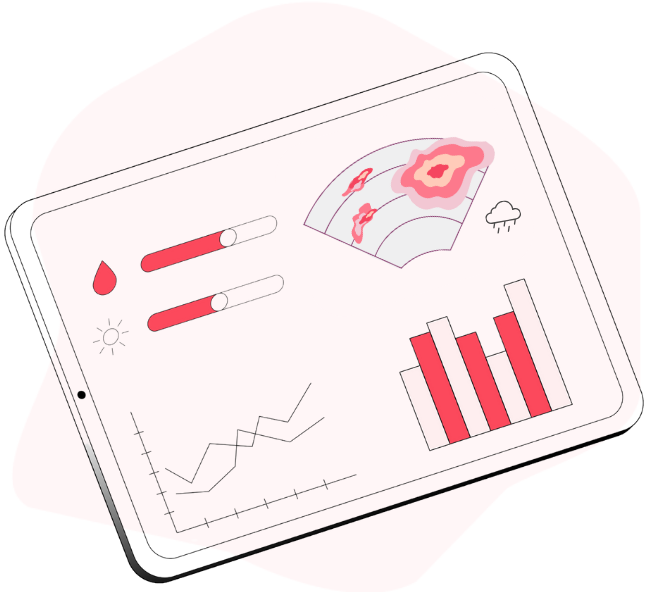

Case Study
Company |
Industry |
 |
Life Science |
We developed a fast, AI-driven nowcasting system to predict precipitation up to 2 hours in advance. Unlike traditional weather models, which take hours to generate forecasts and offer low spatial resolution (5-10 km or similar), our system delivers results in under a minute with higher resolution when trained on larger scales.
Using radar images captured every 5-10 seconds as spatial and time-series data, we modeled future precipitation patterns similar to video data and frames. This was achieved using 3D convolutional neural networks and generative adversarial networks (GANs).
This approach transforms weather forecasting by combining speed, accuracy and high spatial resolution, enabling timely and detailed predictions.


Traditional weather forecasting models face two major challenges: forecasting speed and resolution. These models often take hours to generate predictions, which is oftentimes too slow for scenarios where quick decisions are essential. Additionally, their spatial resolution, typically around 5-10 km, falls short for industries requiring precise, localized data.
This forecasting delay and lack of precision creates challenges for industries like agriculture, where protecting crops or timing spraying depends on real-time weather insights. Similarly, aviation relies on timely forecasts to reroute flights around hazardous weather and event organizers need accurate data to plan outdoor activities.
Radar images of precipitation are known to contain many artifacts that must be cleaned and removed - artifacts could be present because of different objects in the proximity of the radar. There is also a lot of noise that should be removed.
Radar images of precipitation are known to contain a lot of clutter because radars can pick up a lot of objects (such as smoke, bugs, birds, etc) in their proximity. There was a lot of noise that should have been removed.
Radar data often contains long periods with no precipitation, which are irrelevant for training the model. Including too many of these "empty" images could reduce the model's focus on critical weather events. To improve accuracy, we prioritized radar images with significant precipitation, ensuring the model performs better during heavy rain or storms when precise predictions are most needed.
Problems like this require large and complex models. These complex models may overfit the training data easily, especially when using a small dataset. Also, it takes a lot of architecture changes and different experiments to find the optimal parameters.
Machine learning models struggle with events that they see rarely. In this case, these could be hurricanes or severe storms, as these are underrepresented in the training dataset. That’s why it is important to try different data sampling strategies, try to augment the data and maybe even prepare a separate test set with only the rare events.


We built a segmentation Machine learning model using a deep neural network that predicts regions with certain rainfall rates. In our solution, every rainfall rate (as there were around 10 discrete rainfall rates from the radar) has a separate layer that gets predicted independently. This model can predict the following frames in seconds, so it can integrate real-time data quickly (by rerunning the predictions often).
 Python
Python
 PyTorch
PyTorch
 OpenCV
OpenCV
 Matplotlib
Matplotlib

In this project we demonstrated how machine learning models can be used to simulate or speed up linear or non-linear dynamic systems that were once solvable only using large and slow physics models. ML-based solutions can offer faster computing, be accurate at short timescale and have reduced hardware requirements, which is transformative for industries relying on real-time weather insights.
Discover the impact of our custom AI solutions on business success through customer stories

